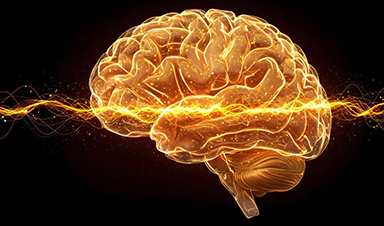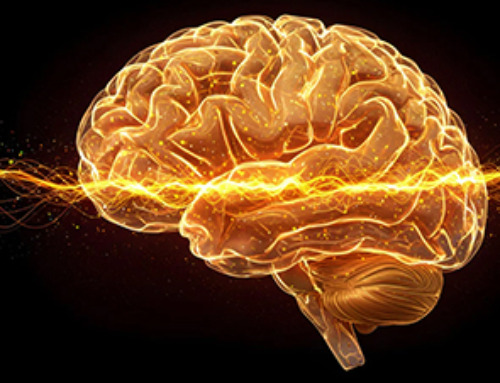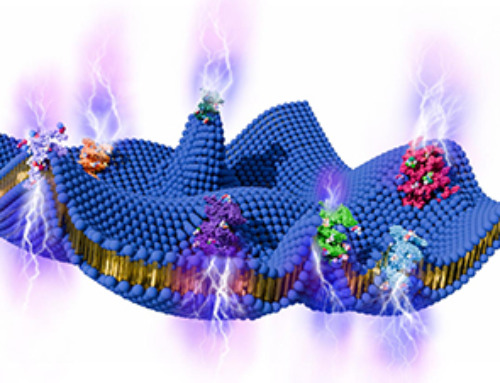In a recent study published in the journal Nature, a team of researchers used murine models and various pharmacological and genetic approaches to examine whether pro-inflammatory signaling involving interleukin (IL)-11, which activates signaling molecules such as extracellular signal-regulated kinase (ERK) and mammalian target of rapamycin complex 1 (mTORC1), was negatively associated with health- and lifespan.
Background
Research suggests that hallmarks of aging such as inflammation, cellular senescence, and mitochondrial dysfunction are associated with perturbations in pathways associated with signaling molecules such as ERK, mTORC1, adenosine monophosphate-activated protein kinase (AMPK), and serine/threonine kinase 11 (STK11). Metabolic health in aged organisms is linked to the AMPK-mTORC1 axis, and the inhibition of mTOR in mice models has been found to extend the animal’s lifespan.
Studies in animal models such as fruit flies, yeast, and worms have explored lifespan extension. However, the findings from these studies cannot directly be applied to healthspan since lifespan extension cannot be equated with improved healthspan. Therefore, it is important to explore the impact of various interventions on lifespan and health span separately. In this respect, mice are suitable models as they exhibit aging pathologies similar to those of humans.
Furthermore, chronic sterile inflammation is a characteristic of a dysfunctional immune system and one of the crucial hallmarks of aging. Interventions targeting pro-inflammatory cytokines could have positive effects on health- and lifespan.
About the study
In the present study, the researchers hypothesized that IL-11, a pro-fibrotic and pro-inflammatory cytokine belonging to the IL-6 family of cytokines, could be involved in pathologies related to aging and lifespan reduction. They based this hypothesis on the role of IL-11 in activating the ERK-mTORC1 and Janus kinase-signal transducers and activators of transcription-3 (JAK-STAT3) pathways.
For this study, the researchers used mouse models and human hepatocyte cultures. Primary human hepatocytes were cultured and then stimulated with IL-11 for varying durations. The supernatants from these stimulated cells were then used for proximity extension assays using an inflammation panel consisting of 92 proteins.
Additionally, human cardiac fibroblasts treated with immunoglobulin G (IgG) or X209, the neutralizing antibody that targets the IL-11 receptor alpha subunit (IL11RA), were used for high throughput phenotyping assay. Serum-starved human cardiac fibroblasts were also used to measure the mitochondrial oxygen consumption rate and fatty acid oxidation rate.
Three strains of mice were used for the animal model experiments — mice with deleted interleukin 11 receptor subunit alpha 1 (IL11RA1) gene, mice with deleted IL11 gene, and mice with the gene for enhanced green fluorescent protein (EGFP) inserted into the IL11 gene. These mice were subjected to various treatments, such as IL-11 deletion and administration of anti-IL11 antibodies, and used to assess metabolic parameters, physiological traits, and lifespan.
Lifespan and tumor progression were monitored after the mice were intraperitoneally injected with IgG or anti-IL-11 antibodies. The animals were also subjected to glucose and insulin tolerance tests, and echo magnetic resonance imaging was used to analyze their body composition.
Grip strength assessments were also conducted, and indirect and bomb calorimetry was performed to measure the body’s metabolic parameters and energy content from stool samples. Additionally, various assays, including colorimetry, were used to assess biomarkers such as cholesterol, collagen, and various interleukin levels and liver function parameters such as alanine transaminase and aspartate aminotransferase activities.
The researchers also conducted quantitative polymerase chain reaction and sequencing of ribonucleic acid (RNA) extracted from the cells and immunoblotting using protein extracted from various tissues such as the liver, visceral gonadal white adipose tissue, and skeletal muscle. Histological and immunofluorescence-based examinations were also performed.
Results
The study found that in aging mice, the expression of IL-11 was upregulated in various types of cells and tissues and that the deletion of either the gene coding for IL-11 or the IL-11 receptor’s alpha 1 subunit protected the mice against metabolic decline, frailty, and multimorbidity as they aged.
Furthermore, administering antibodies against IL-11 in mice aged 75 weeks and older for both sexes for 25 weeks improved muscle function, boosted metabolism, lowered aging biomarkers’ levels, and reduced frailty. The deletion of the IL11 gene was found to extend the lifespan of the mice by an average of 24.9%, and treatment of 75-week-old mice with anti-IL-11 antibodies increased the median lifespan of male and female mice by 22.5% and 25%, respectively.
Additionally, given that mortality in mice due to old age is often cancer-related, it was observed that IL-11 inhibition significantly lowered the incidence of age-related cancers and tumorigenesis.
Conclusions
To conclude, the results highlighted the detrimental role of the pro-inflammatory cytokine IL-11 in mammals’ health span and lifespan. The study found that anti-IL-11 antibodies improved metabolic parameters and muscle function and lowered cancer incidence in mouse models. These findings indicate that therapeutic targeting of IL-11 might be valuable in cancer therapy and treating fibrotic lung disease.
- Widjaja, A. A., Lim, W., Viswanathan, S., Chothani, S., Corden, B., Dasan, Cibi Mary, Wei, J., Lim, R., Singh, B. K., Tan, J., Pua, C. J., Lim, S. Y., Adami, E., Schafer, S., George, B. L., Sweeney, M., Xie, C., Tripathi, M., Sims, N. A., & Hübner, N. (2024). Inhibition of IL-11 signalling extends mammalian healthspan and lifespan. Nature, DOI:10.1038/s41586024077019, https://www.nature.com/articles/s41586-024-07701-9
News
The Brain’s Strange Way of Computing Could Explain Consciousness
Consciousness may emerge not from code, but from the way living brains physically compute. Discussions about consciousness often stall between two deeply rooted viewpoints. One is computational functionalism, which holds that cognition can be [...]
First breathing ‘lung-on-chip’ developed using genetically identical cells
Researchers at the Francis Crick Institute and AlveoliX have developed the first human lung-on-chip model using stem cells taken from only one person. These chips simulate breathing motions and lung disease in an individual, [...]
Cell Membranes May Act Like Tiny Power Generators
Living cells may generate electricity through the natural motion of their membranes. These fast electrical signals could play a role in how cells communicate and sense their surroundings. Scientists have proposed a new theoretical [...]
This Viral RNA Structure Could Lead to a Universal Antiviral Drug
Researchers identify a shared RNA-protein interaction that could lead to broad-spectrum antiviral treatments for enteroviruses. A new study from the University of Maryland, Baltimore County (UMBC), published in Nature Communications, explains how enteroviruses begin reproducing [...]
New study suggests a way to rejuvenate the immune system
Stimulating the liver to produce some of the signals of the thymus can reverse age-related declines in T-cell populations and enhance response to vaccination. As people age, their immune system function declines. T cell [...]
Nerve Damage Can Disrupt Immunity Across the Entire Body
A single nerve injury can quietly reshape the immune system across the entire body. Preclinical research from McGill University suggests that nerve injuries may lead to long-lasting changes in the immune system, and these [...]
Fake Science Is Growing Faster Than Legitimate Research, New Study Warns
New research reveals organized networks linking paper mills, intermediaries, and compromised academic journals Organized scientific fraud is becoming increasingly common, ranging from fabricated research to the buying and selling of authorship and citations, according [...]
Scientists Unlock a New Way to Hear the Brain’s Hidden Language
Scientists can finally hear the brain’s quietest messages—unlocking the hidden code behind how neurons think, decide, and remember. Scientists have created a new protein that can capture the incoming chemical signals received by brain [...]
Does being infected or vaccinated first influence COVID-19 immunity?
A new study analyzing the immune response to COVID-19 in a Catalan cohort of health workers sheds light on an important question: does it matter whether a person was first infected or first vaccinated? [...]
We May Never Know if AI Is Conscious, Says Cambridge Philosopher
As claims about conscious AI grow louder, a Cambridge philosopher argues that we lack the evidence to know whether machines can truly be conscious, let alone morally significant. A philosopher at the University of [...]
AI Helped Scientists Stop a Virus With One Tiny Change
Using AI, researchers identified one tiny molecular interaction that viruses need to infect cells. Disrupting it stopped the virus before infection could begin. Washington State University scientists have uncovered a method to interfere with a key [...]
Deadly Hospital Fungus May Finally Have a Weakness
A deadly, drug-resistant hospital fungus may finally have a weakness—and scientists think they’ve found it. Researchers have identified a genetic process that could open the door to new treatments for a dangerous fungal infection [...]
Fever-Proof Bird Flu Variant Could Fuel the Next Pandemic
Bird flu viruses present a significant risk to humans because they can continue replicating at temperatures higher than a typical fever. Fever is one of the body’s main tools for slowing or stopping viral [...]
What could the future of nanoscience look like?
Society has a lot to thank for nanoscience. From improved health monitoring to reducing the size of electronics, scientists’ ability to delve deeper and better understand chemistry at the nanoscale has opened up numerous [...]
Scientists Melt Cancer’s Hidden “Power Hubs” and Stop Tumor Growth
Researchers discovered that in a rare kidney cancer, RNA builds droplet-like hubs that act as growth control centers inside tumor cells. By engineering a molecular switch to dissolve these hubs, they were able to halt cancer [...]
Platelet-inspired nanoparticles could improve treatment of inflammatory diseases
Scientists have developed platelet-inspired nanoparticles that deliver anti-inflammatory drugs directly to brain-computer interface implants, doubling their effectiveness. Scientists have found a way to improve the performance of brain-computer interface (BCI) electrodes by delivering anti-inflammatory drugs directly [...]





















